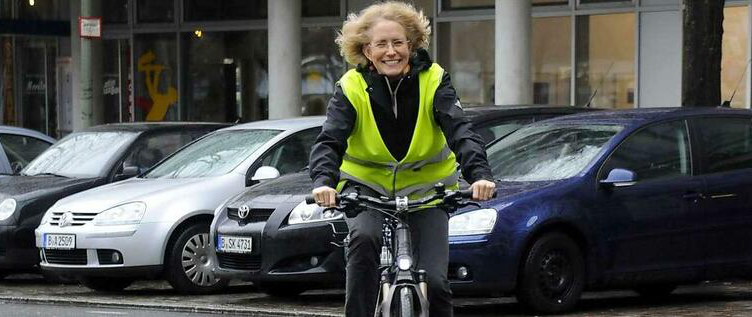The German police union wants to bring light into the dark on the bike paths. Land chief Bodo Pfalzgraf calls for a warning waistcoat for cyclists in the dark. Their transport policy spokesman Oliver Friederici wants to address the issue in the coalition and consider whether we make a Federal Council initiative out of it.
Pfalzgraf reports on an eye-opening experience at a meeting of police and traffic police. There it was illustrated with photos, how well cyclists can be seen thanks to the reflective vest – especially in the rich in lights city, in which the bicycle lights are not always noticeable.
Others emphasize, however, that instead of a new rule, the long-established, with light to drive in the dark should be enforced. This is also what Kerstin Philipp, chairwoman of the larger police union, says: “If we had more police, we could do much more preventative. With more controls and presence, the educational effect would also apply. ”
The fact that it makes sense to wear a safety vest with reflective material as a cyclist, stress the critics of a duty. “Safety vests and cycling helmets contribute to self-protection, and that’s why I recommend it,” says Siegfried Brockmann, who heads accident research for insurers. “For the dark season warning vests would definitely not be bad,” confirms boss Philipp. SPD transport politician Ole Kreins says: “I find a voluntary good.” He does not respond to the CDU demand for a Federal Council initiative. “We also do not equip the pedestrians with safety vests.” This argument does not pull for Warnwestenfan Friederici: “Pedestrians are not so fast and less on the road.”
Most accidents happen for other reasons
The police department states that it is “in the best interest of every cyclist” to be well seen through light and bright, ideally reflective clothing. “While according to police observations still too many cyclists are driving in the dark without light, the voluntary use of safety vests has already increased without obligation.” The police recommend both safety vests and helmets.
The Greens and the cycling association ADFC reject clothing regulations. International comparisons showed that for safe cycling, it was above all the infrastructure that had to be prepared and the traffic climate improved. The German lighting requirement would be sufficient if it were enforced. In Munster, it succeeded to increase the audience rating by controls from 40 percent in the year 2007 to now 97 percent. Who gets caught without the light on the wheel, pays 20 euros.
Pfalzgraf justifies his demand for the obligation to the vest with the fact that in 2013 cyclists caused at least 54 percent of their 6952 accidents. However, in a study by the police, the topic of lighting does not even appear on more than a hundred pages – not even in the list of the eight most common causes of accidents, which covers at least 94 percent of the cases. An indication of the problem of poor visibility provides at most the evaluation of the other cyclist’s accidents caused: There is a priority in the second place. Often this has to do with the fact that others have simply overlooked the cyclists. The discrepancy between the subjectively perceived as extremely reckless lack of lighting and their objectively minor role in the accident explain to experts so that moments of horror and near misses are not recorded.
